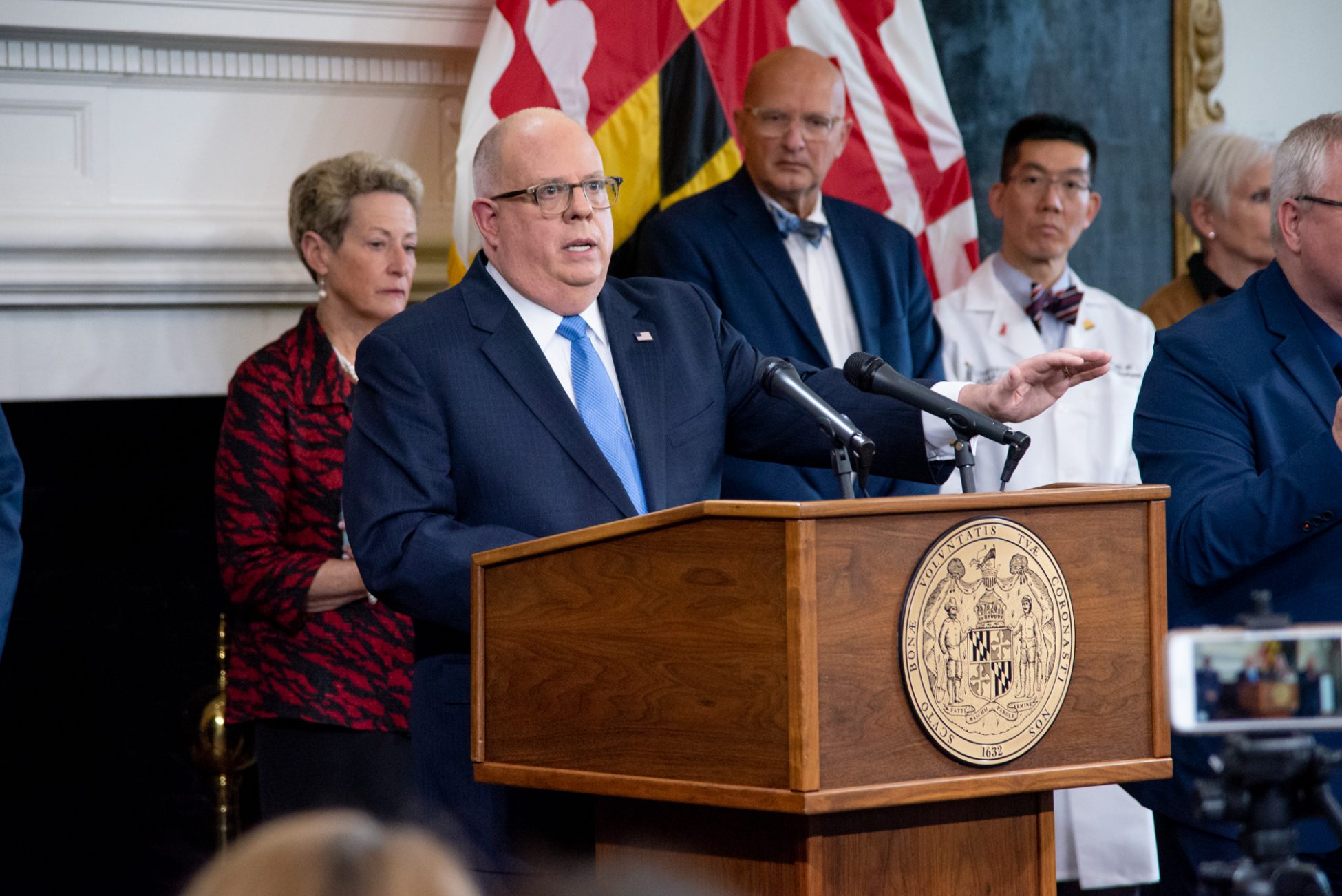Views expressed in opinion columns are the author’s own.
In a recent Op-Ed, Maryland Gov. Larry Hogan proposed his own vision for reviving the Republican Party. It involved reaching outside of Washington, D.C., for policy solutions and, unsurprisingly, a return to the Reagan-era politics of the 1980s. Remarkably, as the governor struck a tone of cautious optimism for the party’s future, at no point did he address the elephant in the room: President Donald Trump.
This failure to even mention the enduring threat the current president poses to both the party and the country is indicative of Hogan’s desire to have it both ways. All at once, he wants to reinvent the party in his own image without fully appreciating the lasting damage Trump has inflicted. If Hogan wants to be a leader in a new and improved Republican Party, he must start with a complete and total rejection of Trump and his toxic brand of politics.
Hogan is in a unique political position as a Republican in a traditionally Democratic state. He has also been considered a potential candidate for the 2024 presidential election, though he has not confirmed that explicitly. These factors make the job of criticizing the current president more difficult, as he has to balance his own reputation as a Republican with his political reputation as a governor.
Considering these circumstances, it’s easy to view this omission as an attempt for Hogan to maintain his own standing within his party. Notably, his criticism of Republican politics had less to do with a specific politician, but rather with “the establishment.” This is not an unfamiliar strategy for politicians, who know that partisans often express some dissatisfaction with the direction of their own party. I would go as far as to argue that candidates like Trump and Sen. Bernie Sanders were successful in large part because of their criticism toward the party establishment.
But what members of any party take exception to is criticism directed toward themselves and their influence within the party. No candidate with hopes of rising to the top of a major political party can expect to do so by criticizing the people from which they require support. I think this is why it seems Hogan frames the issues within the Republican Party as exogenous, rather than the result of toxic forces within his own coalition. By doing this, he is able to opine on the direction of the party without actually acknowledging the reasons it got there.
While this may not be the most politically wise decision, being honest about the deep problems within the Republican Party is the only way for Hogan’s vision to come to life. The influence of Trump’s presidency is not going to magically go away after his term ends — no matter how much some Republicans may want that to happen. This is the reality that any potential reformer must accept, even if it comes at their own expense politically.
Hogan contends, in a brief moment of clarity, that it is a false choice between returning to the pre-2016 Republican Party or continuing on as if Trump were never elected. It’s not just a false choice: Neither option can truly be considered a path forward. Hogan and like-minded Republicans need to be realistic in how they view the future of the party and stop yearning for an era that is long forgotten in the minds of many Americans.
Evan Crum is a junior government and politics and psychology major. He can be reached at ecrum42@umd.edu.



